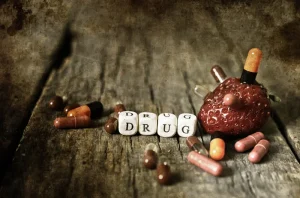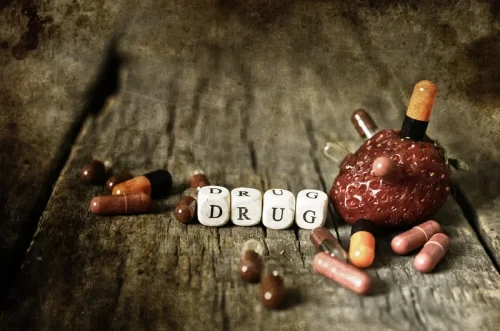
This allows for more succinct treatments and therefore more treatments within the same day therefore decreasing the overall timeline for those athletes who have limited time outside their responsibilities to their sport especially during the season. The role of policymakers in addressing performance-enhancing substance use in bodybuilding cannot be overstated. Policymakers can help ensure that performance-enhancing substances are not widely available and that access to them is limited. This can be done by developing and implementing regulations restricting these substances‘ sale and distribution. For example, some countries have laws requiring individuals to have a prescription before purchasing performance-enhancing substances such as anabolic steroids.

EFFECTS OF PEDS: BLOOD DOPING VIDEO TRANSCRIPT
Anabolic steroids can help weightlifters to lift heavier and erythropoietin can help distance runners to run faster. So the prohibition of these substances appears to place a ceiling on the pursuit of sporting achievement. Other ways of cheating that change the body without using foreign substances include injecting one’s own red blood cells as done with doping at the Tour de France, treating blood with UV light or the use of a hyperbaric chamber (not currently banned), and, potentially, gene doping. Prior to Armstrong’s confession, Ben Johnson was probably the world’s highest-profile drugs cheat.
- It is an anabolic steroid, and in fact, most anabolic steroids misused by athletes are synthetic variants of testosterone.
- These numbers may be underreported especially in the athletic population where there is an increased stigma related to mental health compared to the general population.
- In 2004, the Anabolic Steroid Control Act amended the Controlled Substances Act and expanded its definition of anabolic steroids.
- Amateurs and recreational athletes are included anti-doping’s remit and they may be punished in the same way as elites for anti-doping rule violations, regardless of their athletic ambitions.
Side Effects Of Performance Enhancing Drugs
Some of these are banned by professional associations while others are allowed, and others still are being studied. The history behind drug use in sports goes as far back as ancient times, claiming that doping might have been present as far back as the ancient Olympic Games. However, in relatively more modern times, one of the earliest records of doping was during an endurance walking race where a contestant admitted to using opiates to stay alert. Beyond the legal consequences, an increasing number of public authorities and governments have adopted legislations that treat doping as a criminal act. Consequently, in addition to being ineligible to coach or compete, you may face criminal charges in your country. Depending on the national legislation and the degree of the violation, charges can lead to fines, social service requirements and even incarceration.
- Blood doping through transfusions also increases the risk of infectious disease, such as HIV/AIDS or hepatitis, which is when the liver becomes dangerously inflamed.
- Because Dr Khalsa is the program officer on a National Institutes of Health (NIH) grant held by one of the coauthors, he requested that his name be removed from the author list and added to the Acknowledgments, citing this conflict of interest by NIDA’s policies.
- Doping groups responded by introducing micro-dosing of PEDs that would show only minor variations in biological values while still giving athletes performance benefits.
- In sport groups or organisations where doping is accepted and employment is tenuous or performance based, PEDs may become a normal working condition (Aubel & Ohl, 2014).
- This may be an important area to focus on for the cases of injured athletes with their injury playing a role in the development of their misuse.
Other Drug Use in Sports
These landmark negative effects of drugs in sport discoveries have reinstated the view that multiple levels of the androgen receptor interactome contribute to tissue-specific actions of the androgen receptor ligands, and can be targeted to achieve the desired tissue specificity. Indeed, a number of SARMs have achieved relative differentiation of androgenic and anabolic activity, being preferentially more potent in the muscle than in the prostate (5–9, 12, 13). Several publications have described the mechanistic basis of tissue specificity (5–13).
- The earlier your child gets help, the more likely they’ll be able to recover and achieve long-term sobriety.
- Athletes would be allowed to use low risk substances and monitored for negative effects from higher risk substances, but only prevented from competing if they were deemed not healthy enough to compete.
- Even within a far more circumscribed arena of enforcement – certain types of substance use within specific sporting competitions – it is unlikely doping-free sport (WADA, 2020) will be achieved through a strategy of random or targeted testing and harsh sanctioning.
Both the International Cycling Union and other federations that have implemented the Passport to target athletes for the presence of ESAs have reported a reduction of blood doping among their athletes (397). Athletes and nonathlete weightlifters that use AASs commonly combine different steroids (stacking) in cycles of increasing and decreasing concentrations (pyramiding). Although officials have banned PEDs from Olympic competition since 1967, and the International Olympic Committee has prohibited AAS use since 1975, it was not until 1991 that the U.S.
Endurance sports
Substance use research and policies have historically tended to focus on the individual and individual responsibility for risky behaviours (Rhodes, 2009). This is a trend mirrored in sport doping research that focuses heavily on motives and prevention at the individual level. Taking an approach that understands substance use as socially (and spatially) situated, we can look more broadly at the interplay of physical, social, cultural, economic, and policy factors across levels (micro to macro) to understand how these influence use behaviours. There has been quite a bit of research attention given to risk environments in which social or recreational drug use occurs (see Duff, 2009; 2010; McLean, 2016; Rhodes et al., 2003).

The Enhanced Games: letting athletes use drugs could lead to worse problems than cheating

The isoelectric point for each erythropoietin glycoform is determined by the presence of charged groups on the carbohydrate moieties. The carbohydrate of recombinant erythropoietin, expressed from Chinese hamster ovary or baby hamster kidney cells, is different from that expressed in human kidney cells (392). Notably, https://ecosoberhouse.com/ one recent case series has documented 10 cases of focal segmental glomerulonephritis among frequent AAS users (313). The effect of AAS on aggressive behavior has been studied extensively in many laboratories. The study revealed that these steroids induce profound effects on aggression as well as the signaling molecules and receptors in pathways related to aggression. Occasional field observations have also documented strikingly aggressive or violent behavior in some AAS users who had no history of such behaviors.